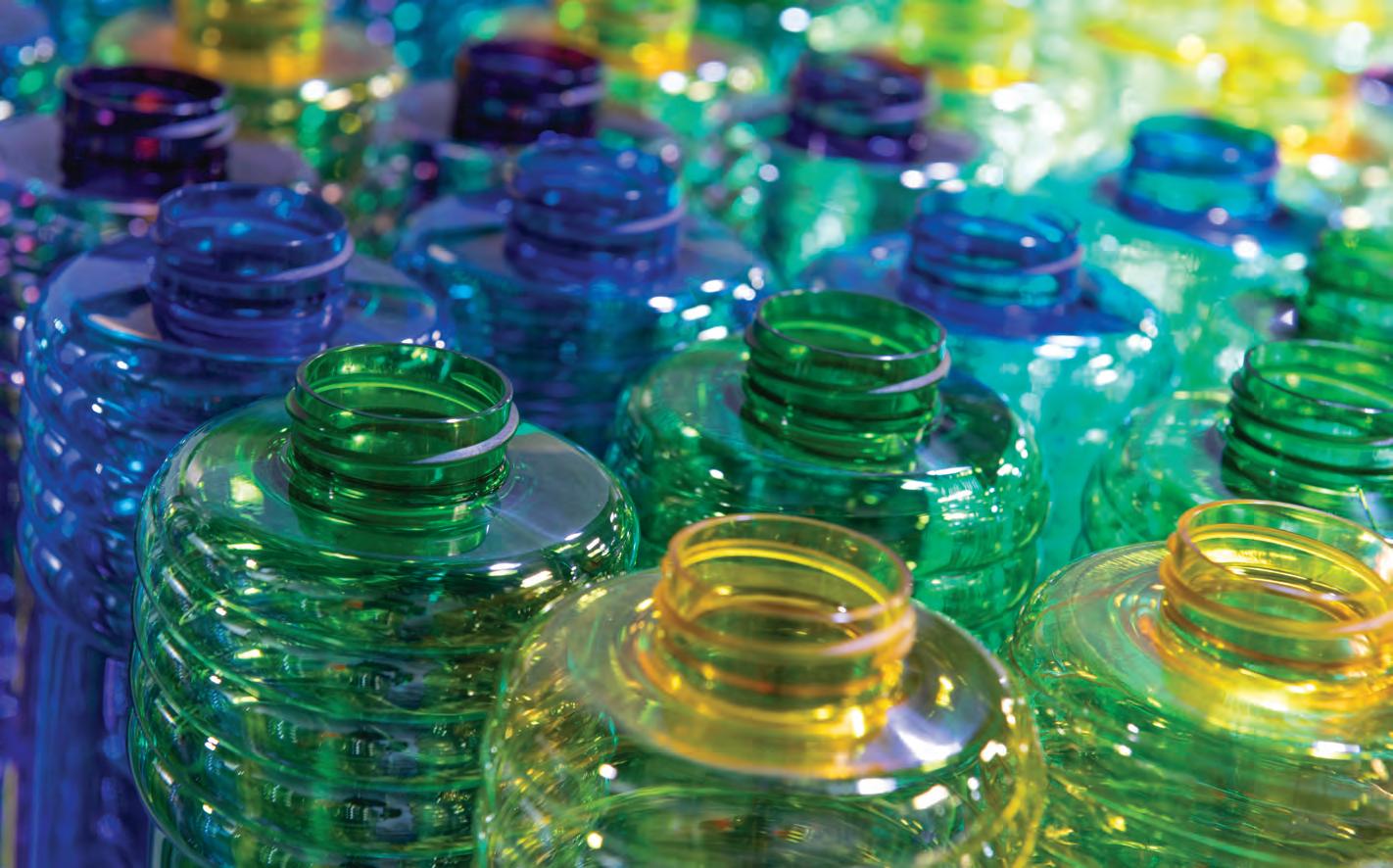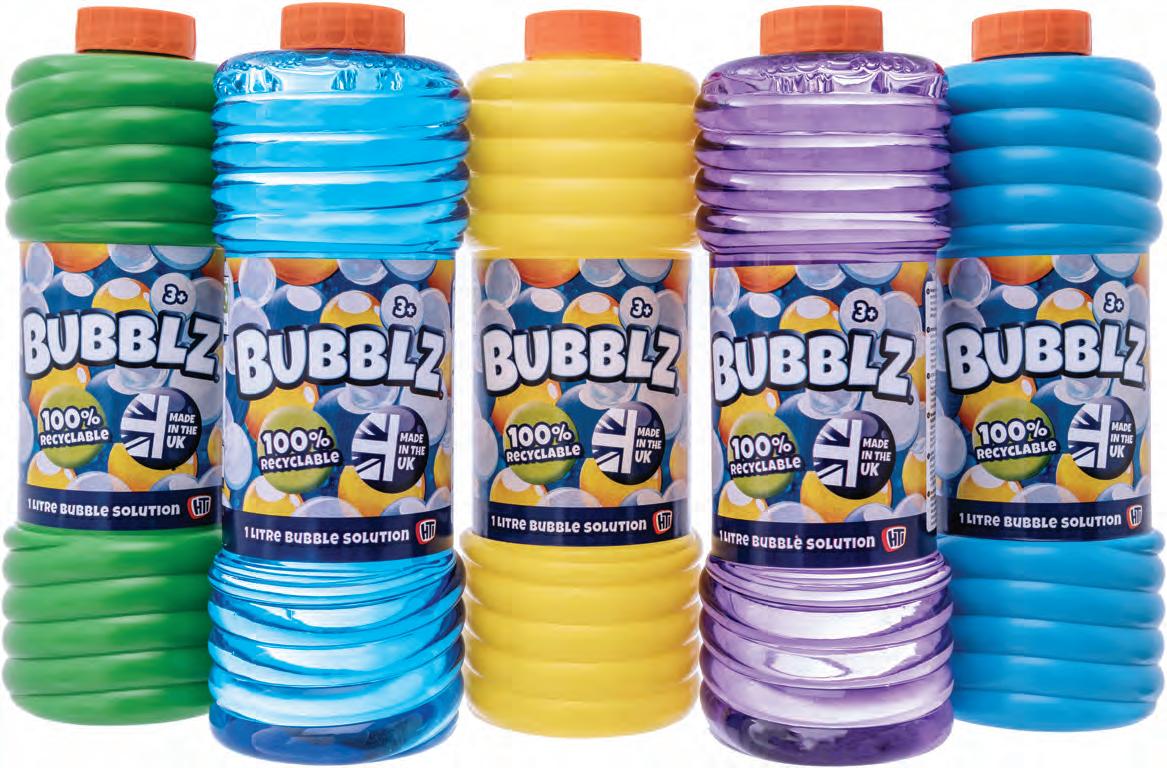
6 minute read
Special Feature - HTI
HTI Toys recently completed the relocation of its bubble production facility from China to the UK, marking a major step in the company’s efforts to reduce its carbon footprint whilst dramatically increasing speed to market and maintaining a value proposition to their customers. Rachael Simpson-Jones spoke to Colin Houlihan, executive director of the HTI Group, to find out more.

Colin Houlihan, executive director of the HTI Group
When Toy World last paid a visit to HTI’s Fleetwood site, the company was in the early stages of setting up its UK bubble making facility. Two years, 12 days and six hours later - a level of detail indicative of Colin’s immense pride and involvement in the move - everything was complete. For HTI, the decision to bring its bubble manufacturing back to the UK began with answering the big question, ‘Why?’
Firstly, across all sectors and as we all now know, the impact of manufacturing on the environment is of ever-increasing concern among consumers. With a significant chunk of a product’s carbon footprint coming in the form of transport, be that air miles or sea miles, HTI felt that onshoring a bubble factory was a hugely positive move in terms of sustainability. Secondly, HTI had the space to not only build a production facility, but to operate it with minimal labour thanks to automation. Full automation was paramount as it gives the company the opportunity to be competitive compared to product manufactured in the Far East. Additionally, the move ensures that the quality of finished product, from bubble solution to the bottles, is a step up from traditional Far East sources.
“As much as the provenance of a product and the security of having a UK manufacturing facility is important, if you’re not competitive in the marketplace then you’re setting yourself up to fail,” Colin explains. “Our decision to bring bubbles back to our shores had to be commercially viable, and despite the various challenges along the way – such as trying to get a 180-tonne blowing machine into position, with only 3mm clearance from millions of pounds worth of product on racking we couldn’t move – we think we’ve done just that, in time for summer too. The whole operation was a huge team effort, and although we missed the intended completion date, albeit only by a month, that moment when we turned the machines on for the first time, and everything worked, was a really special one for all of us.”
An evergreen line, HTI’s bubbles are in demand all year-round, so when deciding on the perfect product with which to kick off its onshoring journey it was the obvious choice. Speaking with Colin, it is clear that this is only the beginning of a long-term commitment to become a greener toy company; the creation of the UK bubble factory has proved that such projects are not only possible but are also financially viable, and that knowledge will pave the way for future moves of a similar eco-friendly nature. A massive part of the transport footprint has been cut out; for HTI, the positives for consumers and retailers, and the chance to make a difference, no matter how small at first, had to be jumped at.
Colin continues: “Interestingly, we feel that it’s kids driving a lot of these conversations rather than parents. We think this generation of youngsters genuinely understand the issues of sustainability and environmental degradation, and they are therefore the ones placing pressure upwards, rather than those messages trickling downwards. This will help to stimulate the discussion around toys, and, ultimately, change the way we all behave. HTI isn’t going to back off making strides in sustainability simply because it’s more challenging, or more expensive. We’re making these changes because it’s the right thing to do, and it’s a core value of ours moving forwards that we continue to reduce our impact on the environment.”
From the beginning, HTI’s bubbles bottles have all been 100% recyclable. They are currently made from a minimum of 30% recycled material, and one of the company’s customers is actually now stocking a line made from 100% recycled material. Continued sustainability was therefore at the heart of the bubble project. Transparency, too, was a key factor. The doors of the new UK plant, which has been fully audited and certified, are open to anyone who would like to look around, any time they care to visit (Covid permitting, of course), and Colin is understandably very keen for HTI’s retail partners to see the bubble production process for themselves. For obvious reasons, those companies whose manufacturing is based in China or elsewhere in the Far East simply do not have that luxury. The water used in HTI’s bubble production is also cleaner thanks to the use of a state-of-the-art filtration system, and the ingredients used for the solution are high quality.


The dramatic reduction in speed to market that will result from the new bubble facility should be seen as a huge win for retailers. As with all seasonal products, buyers know there is always a level of unpredictability and risk; the importance of locally made sustainable product, available at a competitive price, is therefore a no-brainer, according to the company. HTI wants to provide a solution and thus remove the stress of buying without facing double-digit lead-times, Colin says. After all, who can afford to wait for 16 weeks for a replenishment on bubbles?
“We wanted to bring attention to our new factory, as although capacity will remain limited and maybe we cannot find a solution for every retailer this year, demand has been such that we have brought forward our planned next stage of investment to cope with orders for the second half of 2021. For those like-minded retailers looking to partner up with a like-minded company, we would encourage you to join us on our journey.”
Colin tells me HTI is currently exploring additional areas that he believes the company could successfully onshore, with a clear focus on ensuring the recyclable nature of its products is at the forefront of everything it does. The building of the bubble factory has given HTI a much deeper understanding of effective PET and HDPE product creation, and greatly increased the company’s manufacturing expertise – building a factory from scratch in an empty space will do that – and this is now the jumping off point for what appears to be a very exciting few years ahead, with a UK manufacturing entity a key focus of future progress.
“It’s also worth mentioning that a lot of what we’ll be working on next will involve careful consideration of the lifecycle and longevity of the toy in question.” adds Colin. “We often speak of recycling products, but that can mean gifting a preloved toy to a friend or relative; it doesn’t have to mean breaking it down and turning it into something new. At HTI, that means quality – if we can make products that last longer than their competitors, and therefore have an extended life, then why wouldn’t we? We must minimise our carbon footprint, call out our green credentials, and provide longevity with all our toys. The message we want to hammer home is that change is coming; consumers are only going to increase in their demands for greener toys. We all have a part to play in this, and I hope that what we’re doing at HTI, and what other companies are doing too, will provide the confidence needed to get on board.”











